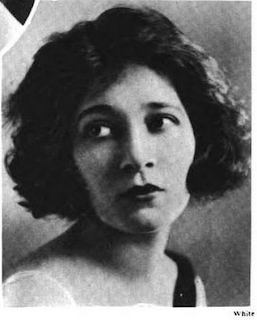Michelangelo Antonioni is coming to London in January and
February with the BFI screening many of his films including his magnificent run
in the sixties: L’Avventura, La Notte,
L’Eclisse, Red Desert and Blow Up. I’m
also looking forward to seeing 1970’s Zabriskie
Point on the big screen – Pink Floyd and explosions are the perfect mix -
even though many commentators have seen that as the beginning of his lower
quality output. I’d disagree about that film, which is flawed yet still
powerful as I would about the director’s next feature in 1975.
The Passenger
is a film about identity, coincidence and, possibly, fate. The lead character
is a passenger in someone else's life, as he has been with those he has
interviewed in his career as a journalist. He's on the run from his own life
but is that because he knows his end is both inevitable and imminent?
 |
| Meeting at Casa Milà |
Beautifully photographed by Luciano Tovi, The Passenger begins in Algiers and
takes in London, Munich, Barcelona and southern Spain on its relentless
journey. It packs in a huge amount of locations and some amazing buildings
including Gaudi's brilliant Casa Milà and, needless to say, it looks absolutely
fabulous on screen – so much more splendid
than on home media.
Jack Nichoson is David Locke, a documentary film maker,
who takes advantage of the death of a man staying in the same hotel. For
reasons we spend the rest of the film trying to fathom, Locke assumes the man's
identity and passes off his death as his own. The man, Robertson, turns out to
be a gunrunner, supplying arms to one of the factions in the Chad civil war. He
leaves behind a diary of meetings that Locke then proceeds to try and fulfil,
perhaps driven by some sympakthy with their cause.
He is also spurred on by the investigations of former
colleague Knight (Ian Hendry) and his estranged
wife, a coolly-detached Jenny Runacre (another 70's icon). Along the way Locke
meets an un-named architectural student, played by the magnetic Maria
Schneider, simply excellent here as an almost non-actorly actor, natural, very
responsive and enigmatic - a perfect match for Jack.
 |
| Jack |
Nicholson gives a performance of intelligence and
world-weary complexity. He compliments Antonioni's style perfectly with dryly
humorous inventions highlighting the necessary intensity of this conflicted
character. Antonioni was impressed with Easy
Rider and the related American "new wave" and it's easy to see
why he wanted one of the leaders of that generation in this film, a
continuation of his counter-cultural examinations in Zabriskie Point.
There is one horrific sequence where Antonioni appears to
use film of an actual execution. Watching the film I once again hoped that it
wasn't real, but, if it was, you have to question the validity of this
injection of actuality even at this distance. The writer,
Mark Peploe, has said he found this sequence upsetting although he recognised the need to reflect reality. Whatever the moral and artistic merits, the film is based
on these realities and the Chad conflict in question ran for some 40 years.
 |
| All at sea |
Locke and the girl keep meeting appointments but the
insurgents do not make them. By now the police are on their trail and there's a
growing sense of impending doom.
The film ends with one of the most stunning single takes
I've ever seen. In one amazing shot, lasting over seven minutes, the camera
takes a slow and steady journey from Locke's hotel room out towards the chaos
in the street and back to the same room as the characters catch up with each
other and the story ends. It took a week to film and is a technical tour de
force. A supernaturally quiet and understated ending that highlights the
loneliness of death... the casual, matter-of-factness of the inevitable end.
It's a film you have to study carefully as Antonioni
takes us through at his own pace, we have to experience his story at the rate
he dictates. He needs our patience.
When The Girl asks what he is running from, sat in the
back of Locke's car as they drive south through the country roads, he replies,
"turn your back to the front seat...". She swivels around, throws out
her arms, flings her head back and beams as the open road recedes behind them.
It's a great moment and says so much about the film and the lives we all live.
Maria is completely in the now, eyes bright and just taking in the full glory
of the moment as they pass through a beautiful avenue of sunlit trees... then her face changes slightly as she understands beyond the initial thrill of illusory freedom.
The Passenger screens
from 4th January at the BFI and across the UK - details are on the BFI site.
It's definitely one to see on the big screen!
So let's take a
ride and see what's mine...



































%20Despair.png)








